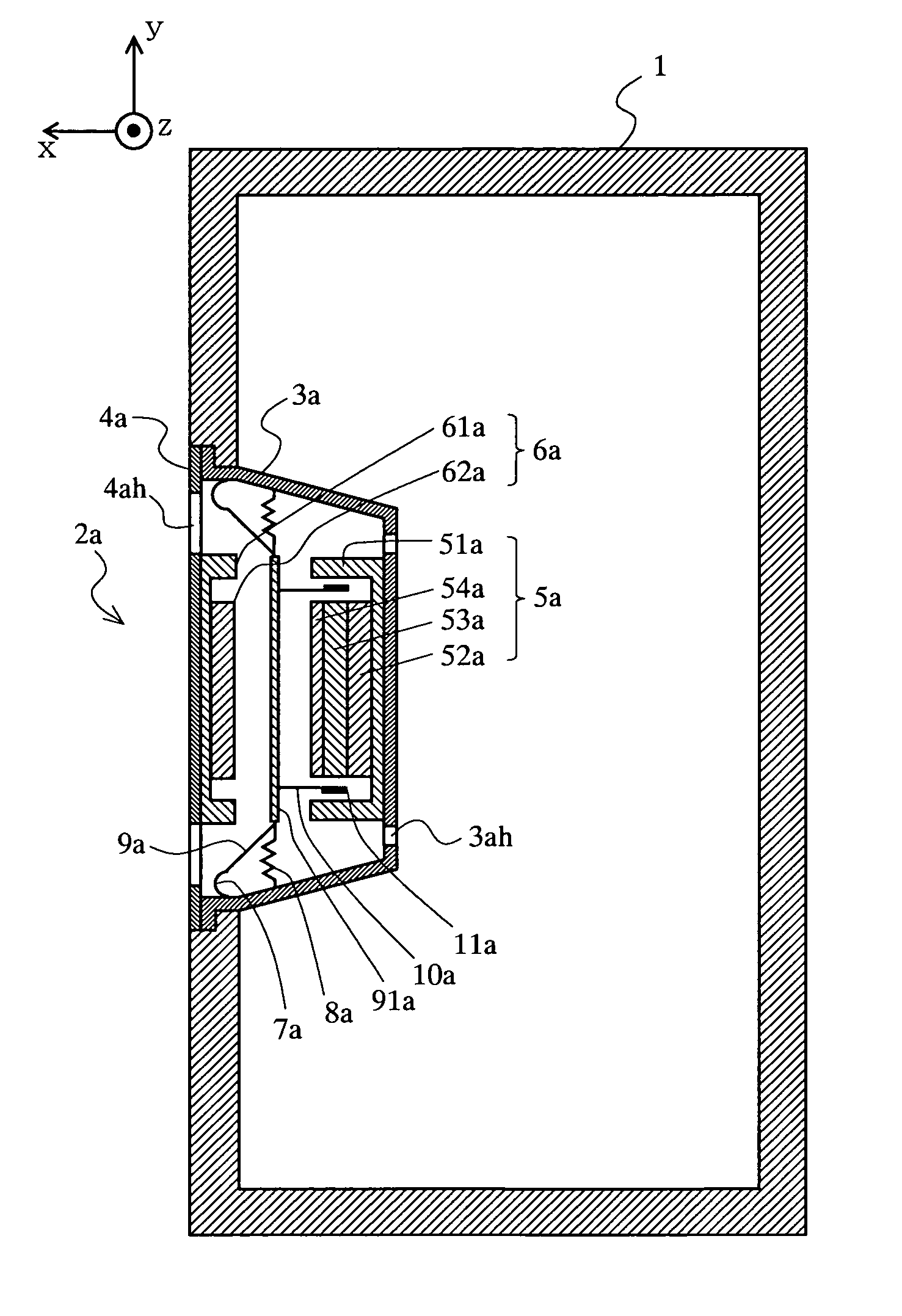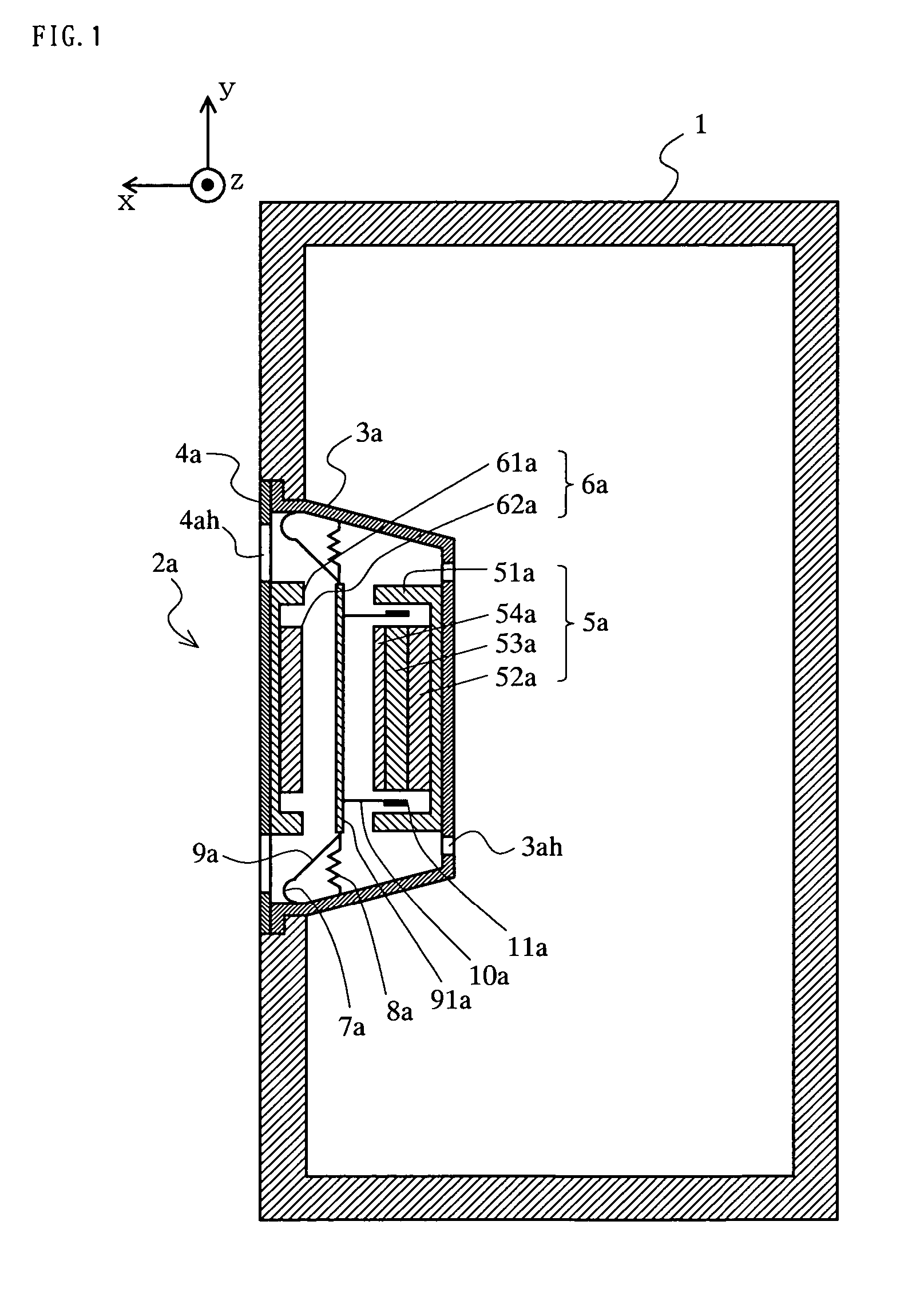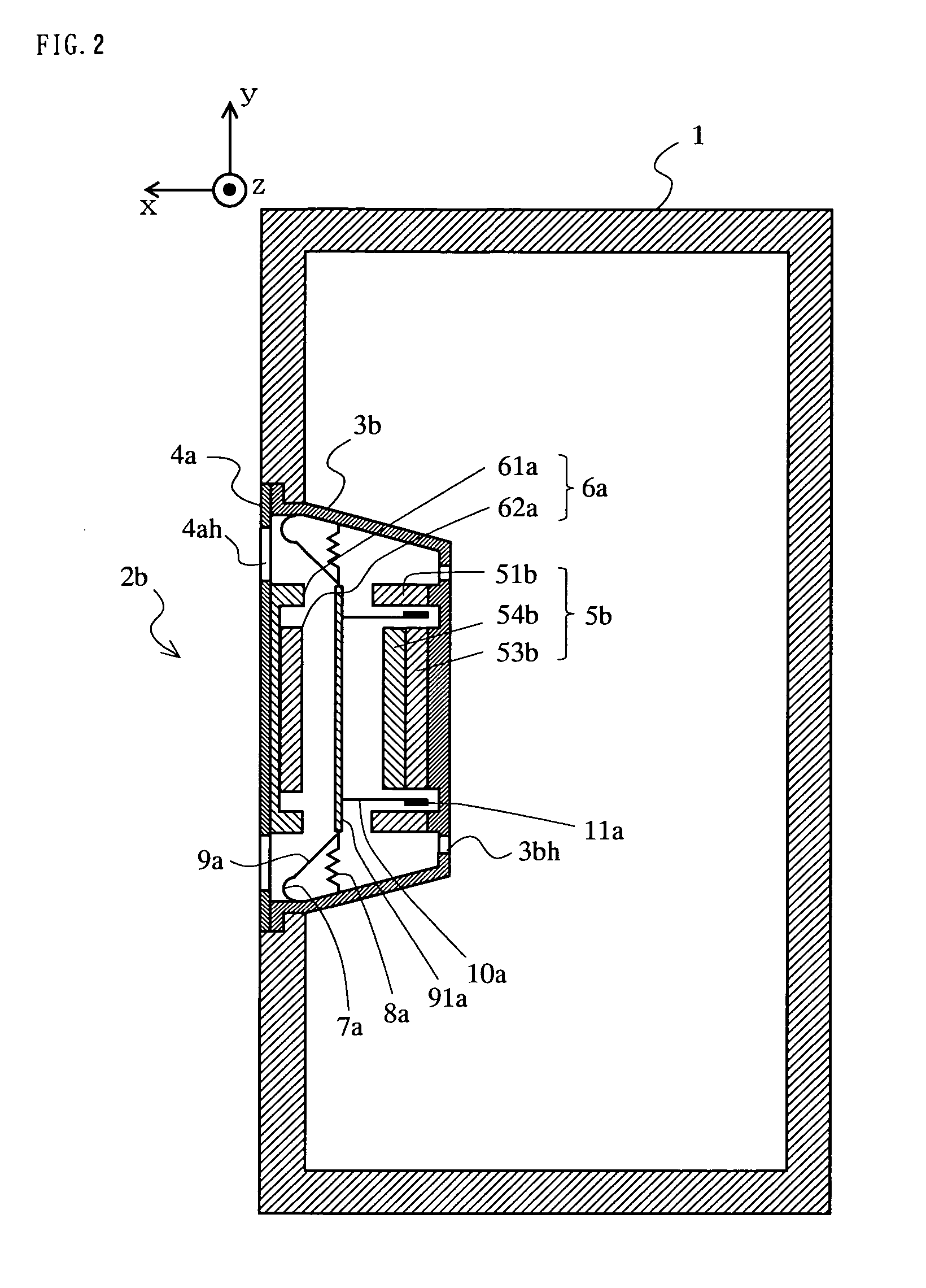Speaker Device
a technology of speaker and housing, which is applied in the direction of transducer details, metal diaphragms, electrical transducers, etc., can solve the problems of difficulty in achieving sufficient low-frequency sound reproduction, and achieve the effects of expanding the limit of low-frequency sound reproduction, reducing the acoustic stiffness inside the housing, and increasing the amplitude of the non-magnet member
- Summary
- Abstract
- Description
- Claims
- Application Information
AI Technical Summary
Benefits of technology
Problems solved by technology
Method used
Image
Examples
first embodiment
[0086] A speaker device according to a first embodiment of the present invention will be described with reference to FIG. 1. FIG. 1 is a cross-sectional view of a structure of the speaker device of the first embodiment. In FIG. 1, the speaker device of the first embodiment roughly comprises a cabinet 1 and a speaker unit 2a. The speaker unit 2a, which is in the shape of, for example, a circle, is attached to an opening portion formed in a front surface (the positive direction of an x axis) of the cabinet 1. The cabinet 1 is a housing which gives an acoustic stiffness to the speaker unit 2a. The speaker unit 2a is composed of a back surface frame 3a, a front surface frame 4a, a first magnetic circuit 5a, a second magnetic circuit 6a, an edge 7a, a damper 8a, a diaphragm 9a, a voice coil bobbin 10a, and a voice coil 11a.
[0087] The back surface frame 3a has a shape in which an inner portion thereof is projected in the shape of a convex with respect to an outer circumferential portion ...
second embodiment
[0102] A speaker device according to a second embodiment of the present invention will be described with reference to FIG. 3. FIG. 3 is a cross-sectional view of a structure of the speaker device of the second embodiment. In FIG. 3, the speaker device of the second embodiment roughly comprises a cabinet 1 and a speaker unit 2c. The speaker unit 2c, which is in the shape of, for example, a circle, is attached to an opening portion formed in a front surface (the positive direction of an x axis) of the cabinet 1. The cabinet 1 is a housing which gives an acoustic stiffness to the speaker unit 2c. The speaker unit 2c is different from the speaker unit 2a of the first embodiment in that both the first and second magnetic circuits both form magnetic gaps, and two voice coil bobbins and two voice coils are provided. Hereinafter, a structure of the speaker unit 2c will be described.
[0103] The speaker unit 2c is composed of a back surface frame 3c, a front surface frame 4c, a first magnetic...
third embodiment
[0120] A speaker device according to a third embodiment of the present invention will be described with reference to FIG. 5. FIG. 5 is a cross-sectional view of a structure of the speaker device of the third embodiment. In FIG. 5, the speaker device of the third embodiment roughly comprises a cabinet 1 and a speaker unit 2e. The speaker unit 2e, which is in the shape of, for example, a circle, is attached to an opening portion formed in a front surface (the positive direction of an x axis) of the cabinet 1. The cabinet 1 is a housing which gives an acoustic stiffness to the speaker unit 2e. The speaker unit 2e is different from the speaker unit 2c of the second embodiment in that a second magnetic circuit is supported by a column disposed in a gap between the second magnetic circuit and a first magnetic circuit, so that the front surface frame is no longer required, and an outer appearance thereof is similar to that of conventional speaker units, and that a magnetic material does no...
PUM
 Login to View More
Login to View More Abstract
Description
Claims
Application Information
 Login to View More
Login to View More - R&D
- Intellectual Property
- Life Sciences
- Materials
- Tech Scout
- Unparalleled Data Quality
- Higher Quality Content
- 60% Fewer Hallucinations
Browse by: Latest US Patents, China's latest patents, Technical Efficacy Thesaurus, Application Domain, Technology Topic, Popular Technical Reports.
© 2025 PatSnap. All rights reserved.Legal|Privacy policy|Modern Slavery Act Transparency Statement|Sitemap|About US| Contact US: help@patsnap.com



